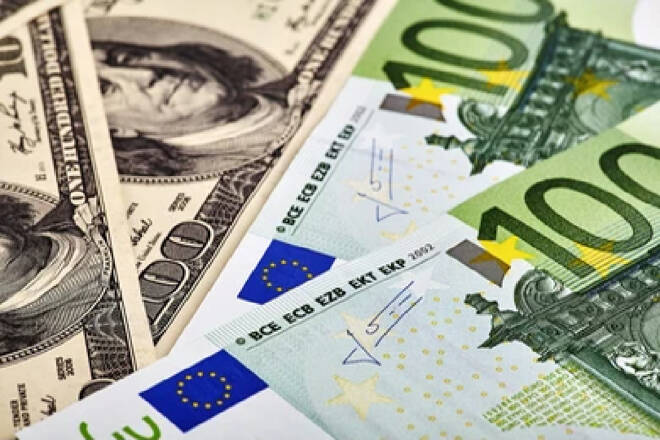Advertisement
Advertisement
EUR/USD Eyes Sub-$1.0950 on Post China Trade Data Jitters
By:
Trade data from China set the tone this morning, dragging the EUR/USD into the red. However, German inflation numbers and Fed chatter will also influence.
Highlights
- On Tuesday, German inflation numbers and trade data from France will influence.
- However, FOMC member commentary will need consideration later in the day, with members Harker and Barkin on the calendar to speak.
- The nearer-term technical indicators turned bearish, with sub-$1.0950 in view.
On Monday, the EUR/USD fell by 0.05% to wrap up the day at $1.10023. German industrial production figures left the EUR/USD in negative territory.
Today, finalized German inflation numbers and trade data from France will draw interest. We expect revisions to German inflation numbers to impact the EUR/USD more. While trade terms are influential, inflation and related leading indicators remain the focal point.
According to prelim figures, Germany’s annual inflation rate softened from 6.4% to 6.2% in July.
While the economic calendar is on the light side, no ECB Executive Board Members are on the calendar to speak today. However, the ECB will release the ECB Consumer Expectation Survey results for June, which will move the dial. Service sector activity continues to prop up the Eurozone economy. Deteriorating consumer sentiment would be a bearish scenario.
Ahead of the European opening bell, trade data from China set the tone. Exports from China tumbled by 14.5% in July versus a 12.4% decline in June. Imports slumped by 12.4% versus a more modest 6.8% fall in June. Economists forecast exports to fall by 9.8% and imports to decline by 5.6%. The dollar trade surplus widened from $70.62 billion to $80.60 billion.
The US Session
US trade data will be in focus later in the day. However, the numbers are unlikely to influence the Fed and, therefore, the dollar.
The US trade – GDP ratio stood at 25.48% in 2021 and, importantly, is not a Fed focal point, limiting the impact of US trade data on the US dollar.
However, investors should monitor the news wires for Fed chatter with the media. FOMC members Barkin and Harker are on the calendar to speak today.
EUR/USD Price Action
Daily Chart
The Daily Chart showed the EUR/USD hover below the $1.1015 – $1.1060 resistance band. However, the EUR/USD held above the 50-day ($1.09744) and 200-day ($1.07937) EMAs, sending bullish near and longer-term price signals.
A EUR/USD move through the $1.1015 – $1.1060 resistance band would give the bulls a run at $1.11. However, a fall through the 50-day EMA ($1.09744) would bring the $1.0900 – 1.0850 support band into play.
Looking at the 14-Daily RSI, the 47.04 reading sends moderately bearish price signals. The RSI suggests a fall through the 50-day EMA to bring the $1.0900 – 1.0850 support band into view.
4-Hourly Chart
Looking at the 4-Hourly Chart, the EUR/USD sits below the $1.1015 – $1.1060 resistance band. The EUR/USD remains below the 50-day ($1.10002) and 200-day ($1.10013) EMAs, sending bearish near and longer-term price signals.
The bearish cross of the 50-day EMA through the 200-day EMA brings sub-$1.0950 and the $1.0900 – 1.0850 support band into play. However, a EUR/USD move through the EMAs would support a breakout from the $1.1015 – $1.1060 resistance band to target $1.11.
The 14-4H RSI at 48.74 sends bearish EUR/USD price signals, with selling pressure outweighing buying pressure. Significantly, the RSI signals a return to sub-$1.0950 to bring the $1.0900 – 1.0850 support band into play.
About the Author
Bob Masonauthor
With over 28 years of experience in the financial industry, Bob has worked with various global rating agencies and multinational banks. Currently he is covering currencies, commodities, alternative asset classes and global equities, focusing mostly on European and Asian markets.
Did you find this article useful?
Latest news and analysis
Advertisement
